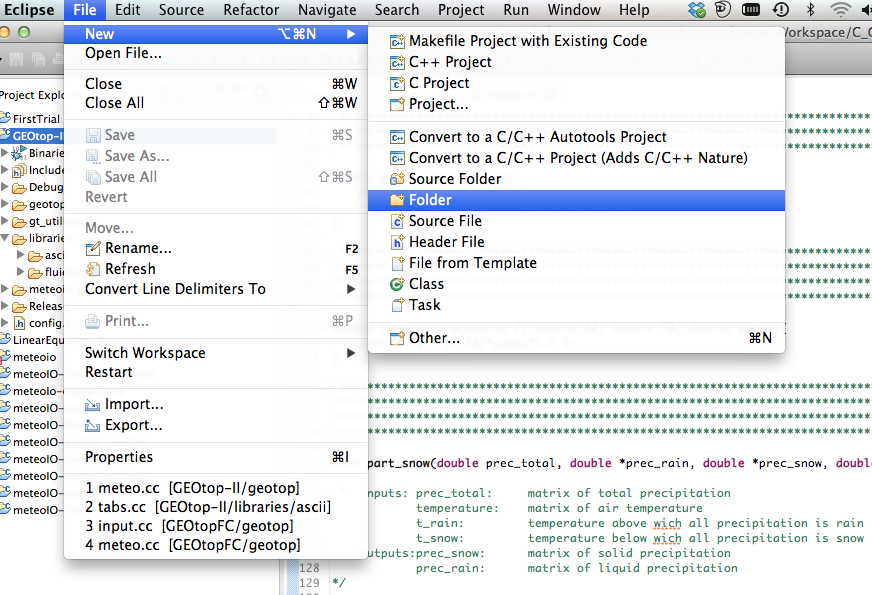This is, however, the old post:
After a few hacking I was able to transport my compiled version of GEOtop and libraries to a different machine. It is still a rough approximation of what it can be. However, it works. No compiling is required as before, just installations:
#You have to know, first, that in Mac OS there exist an application called "Terminal" in /Applications/Utilities/ folder. If you do not know browse a little the web to understand what is is about. From Terminal, then,
# Install the following packages (or verify you have them already):
Install, Homebrew and other required libraries.
#Install needed libraries
brew install boost
brew install gdal
brew install proj
#Install GEOtop components and libraries: this require, at the moment, a little of hand working
Download the executable zipped file from here.
Once unzipped the file look at the directories created and place the files you find in the "/Libraries" and "/usr" directories into the directories with the same name in your Mac hard disk. Both the directories can be found from the root with the Finder and while Library is visible, "/usr" is usually not. To make it visible, follow the instructions here.
As you can see, once unzipped the files, I chose to create a "/usr/local/GEOtop" directory where all the real executable are (has to be placed). This directory is actually not a standard one, However, I placed a symbolic link into /usr/local/bin, which is a directory usually already present in the Terminal path (to make a symbolic link by yourself, see here). Differently of the /Library and the directory "/usr/local/lib" and "/usr/local/include" that already exist, "/usr/local/GEOtop" has to be created, and therefore you can simply drag and drop the unzipped directory to copy it.
At this point everything should be set, if everything works fine, you should just execute GEOtop from any place simply by issuing:
At this point everything should be set, if everything works fine, you should just execute GEOtop from any place simply by issuing:
$ geotop
If it runs, at this point it should give a runtime error:
Error::Run time error
Error::You need to export the WorkingPath environment variable before to run the program
........exiting...
But this is what it should be^1. Now, that you are doing it right:
#Download the examples
You can find them here. Unzip them in your directory, for instance ~/GEOtop, under your Home directory ("~" stands for your Home directory or, given as absolute path for "/Users/YourHomeNameHere/GEOtop").
#Try geotop examples
cd to the directory (folder) where the tests are), for instance:
~/GEOtop/tests/test_sample_run/small_example
~/GEOtop/tests/test_sample_run/small_example
Issue:
$ geotop ./
If you did it well and the goddess of programmers assisted you, it should work, as it did for me and in Tim's machine.
Please observe that now (2015) we have:
_________________________________________________________________________________
^1 - If it does not run try:
/usr/local/GEOtop/geotop/geotop
and you should have the same runtime error. This just means that all is correct except for, maybe, the symbolic link or your PATH in Terminal shell, that, for some reason, is not containing "/usr/local/bin".
















